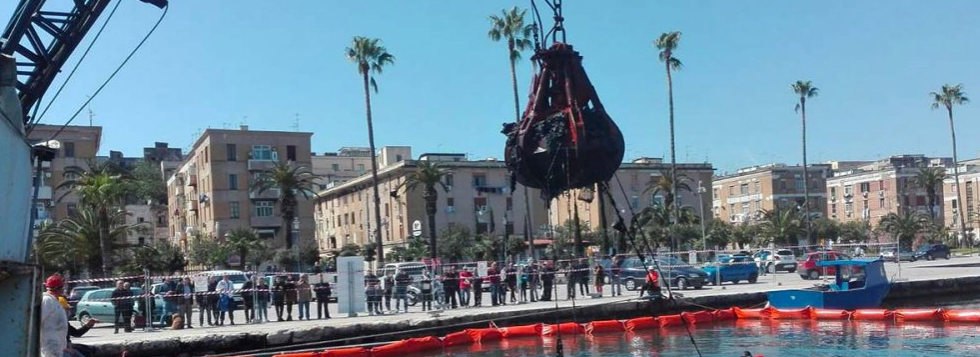These images obtained by VeraLeaks have been taken in the waters of the Little Sea’s first inlet after the interventions of Vera Corbelli, the Commissioner for the decontamination of Taranto. The shootings don’t leave space for any doubt: soon after the decontamination of the seabed of the Little Sea’s first inlet, these areas still look like an open-air dump today. There are several types of rediscovered materials: plastics of any kind, some of them were used in the mussel farming and fishing activities; metallic remains of appliance and cars; ropes, tyres of any measure, barriers, cement blocks and other materials coming from construction sites.
The timing between the decontaminations and these images excludes the hypothesis for which these materials were thrown in the sea after the decontaminations; it is instead clear that these materials were left there and avoided by the decontaminating operations: why?
Although we have seen the remains of the cars being taken out of the seabed and we have read on the newspapers about the tonnes of garbage collected, when can we consider these areas as decontaminated? Who checks the status of the areas interested by these operations? Also, these operations consist only of collecting the materials from the sea bottom or they include also specific samplings before and after the decontamination? If these samplings and related reports were conducted, where are the results and their validation issued by the authorities?
These are legitimate questions that come out when you watch these images and read the numbers of the sums of money spent for the decontamination of the heritage site of Taranto.
VeraLeaks makes available this footage for its acquisition by authorities and institutions.

